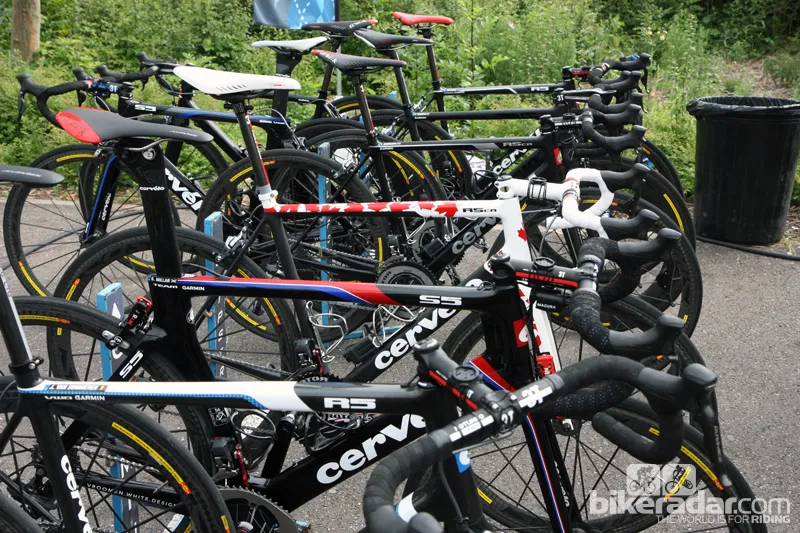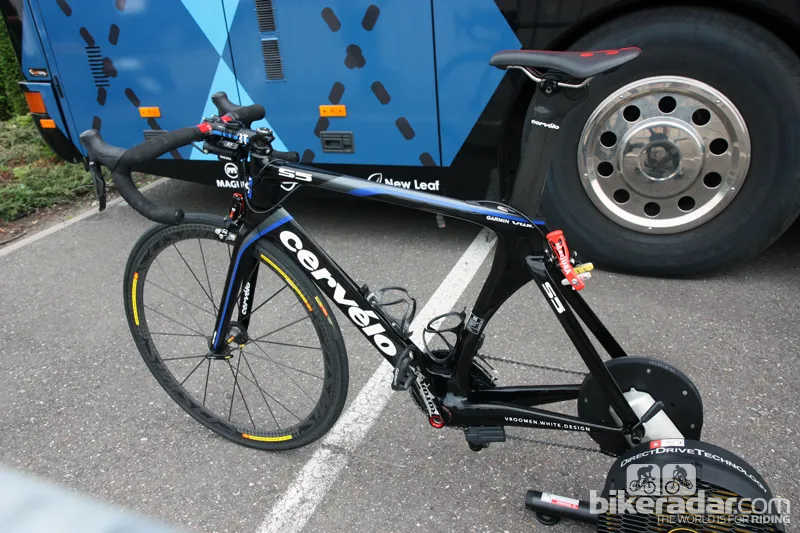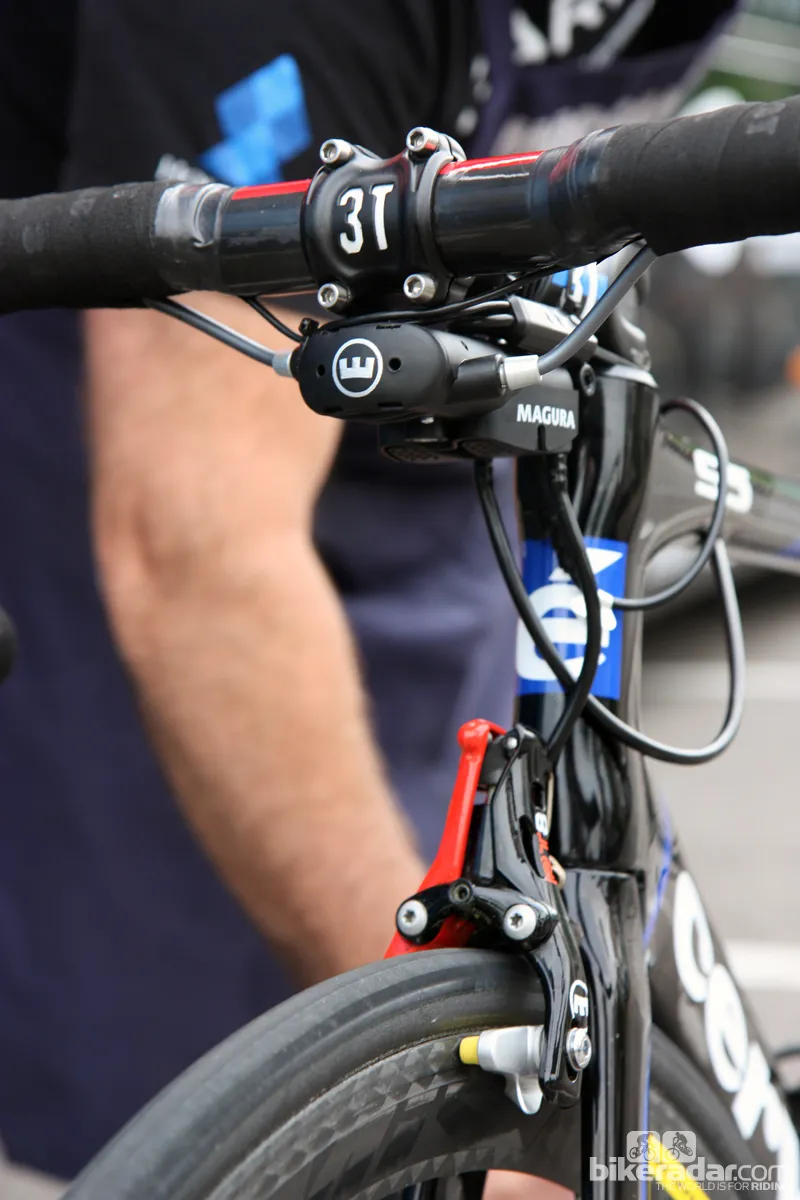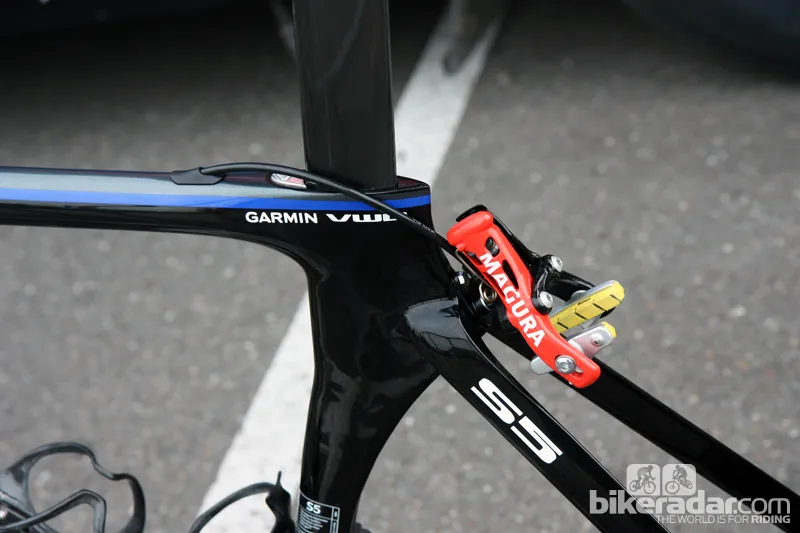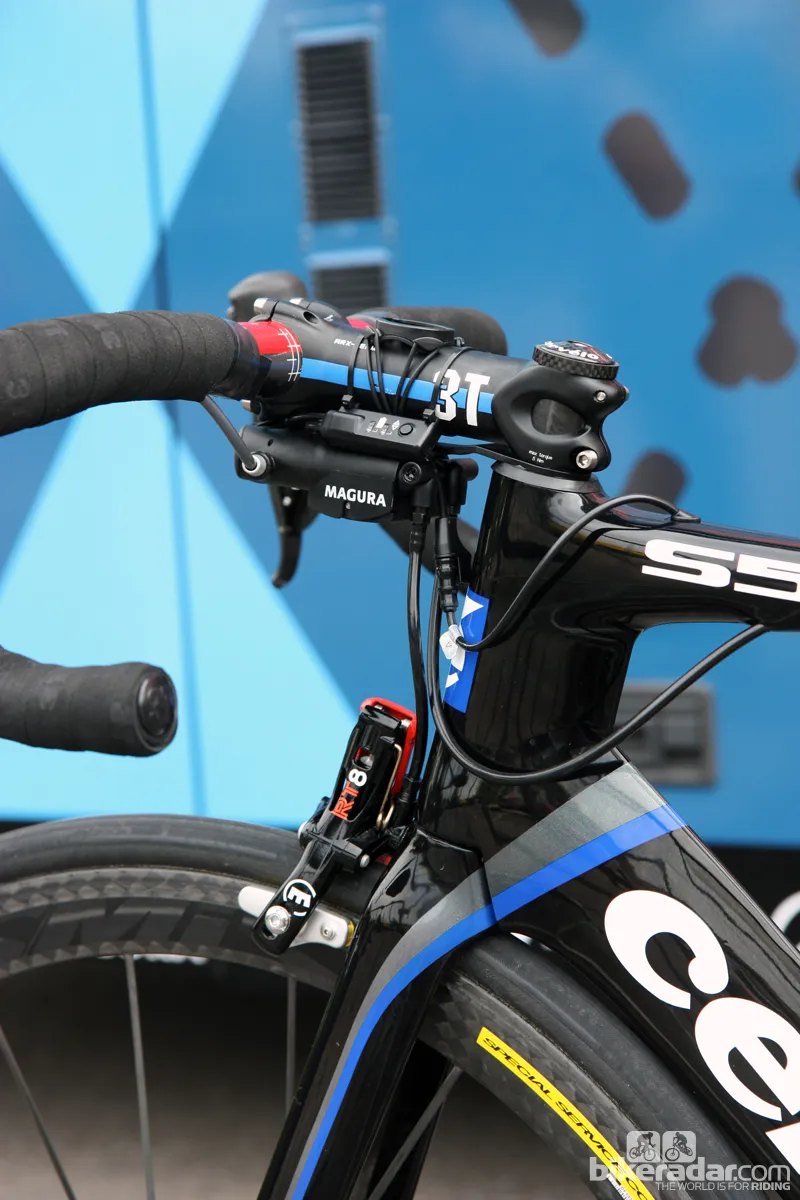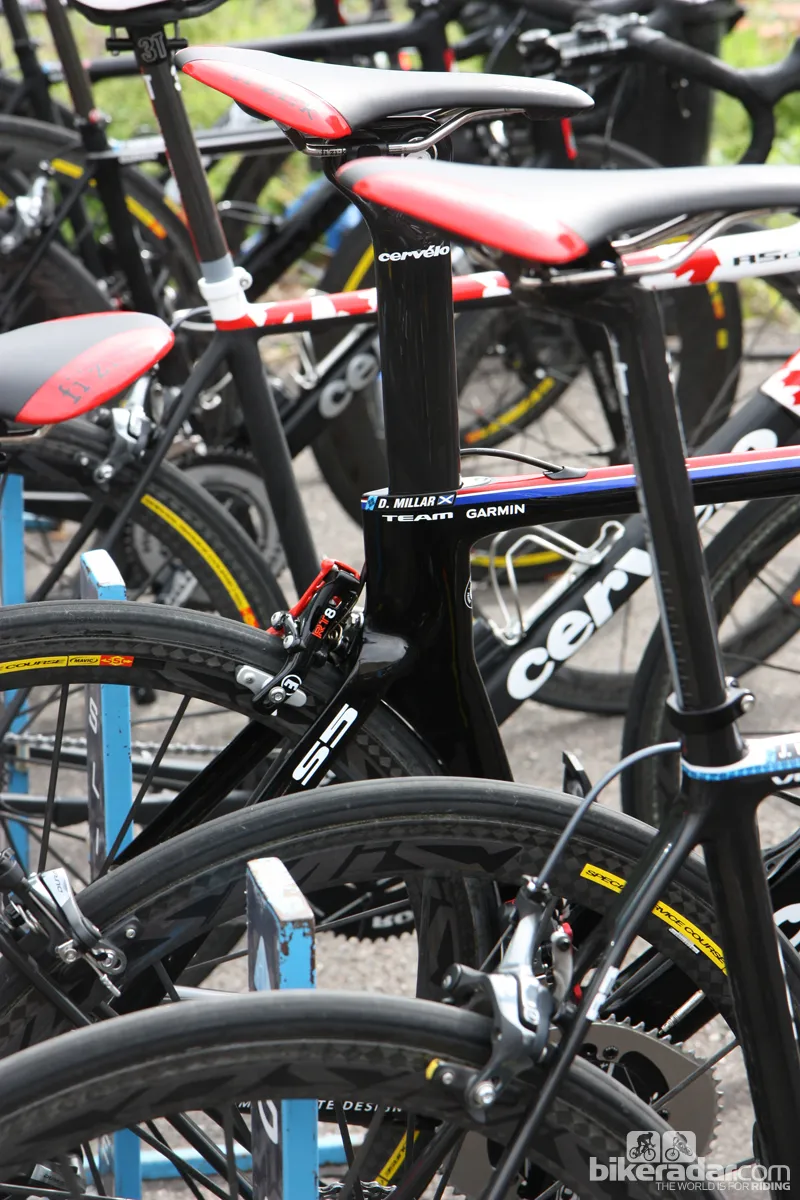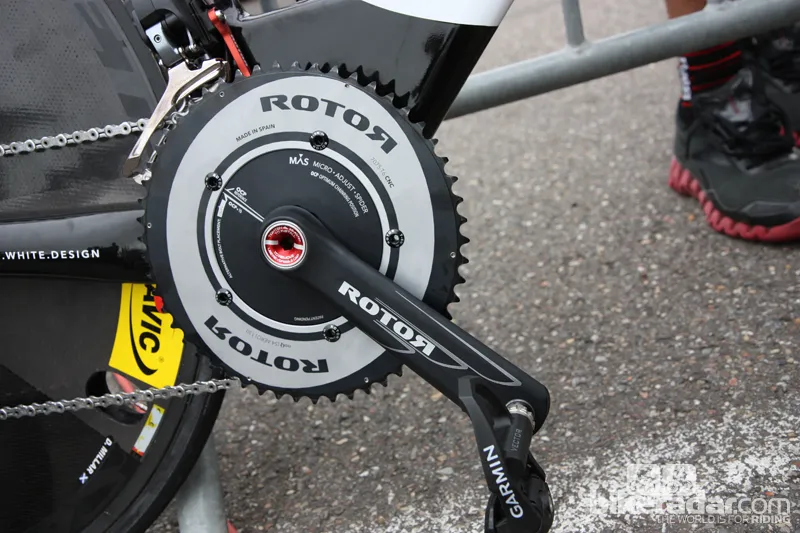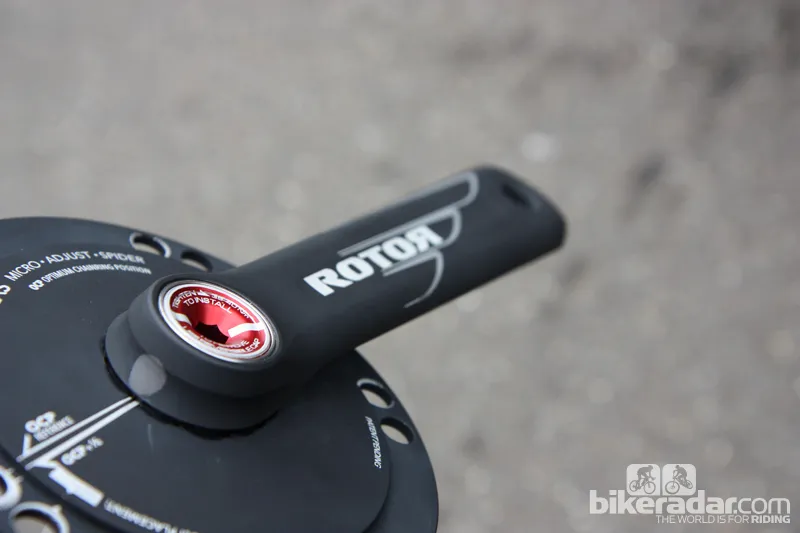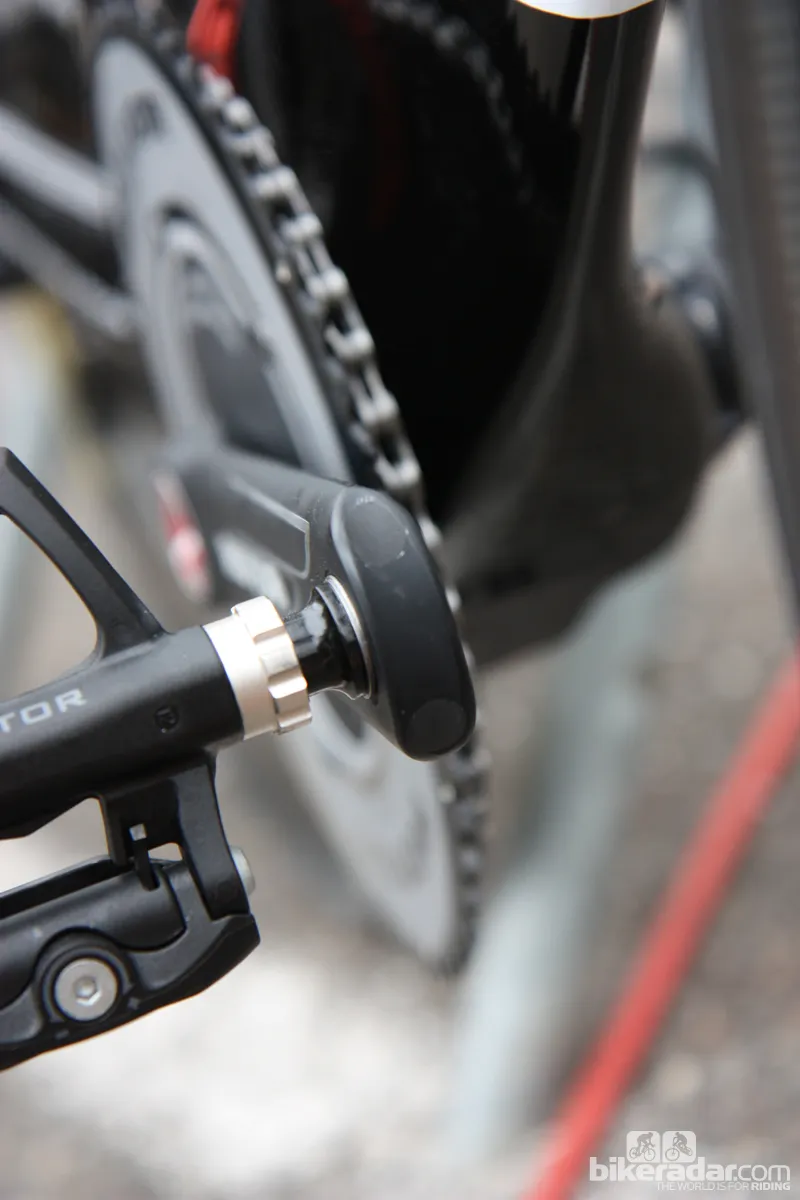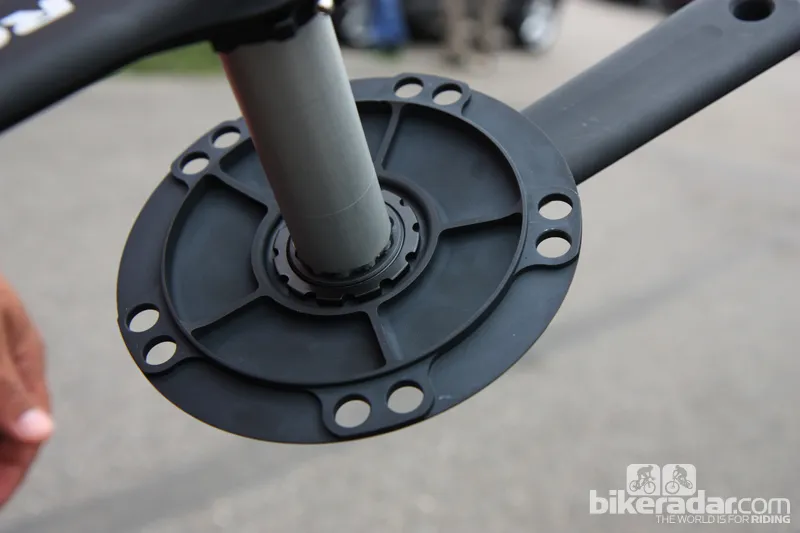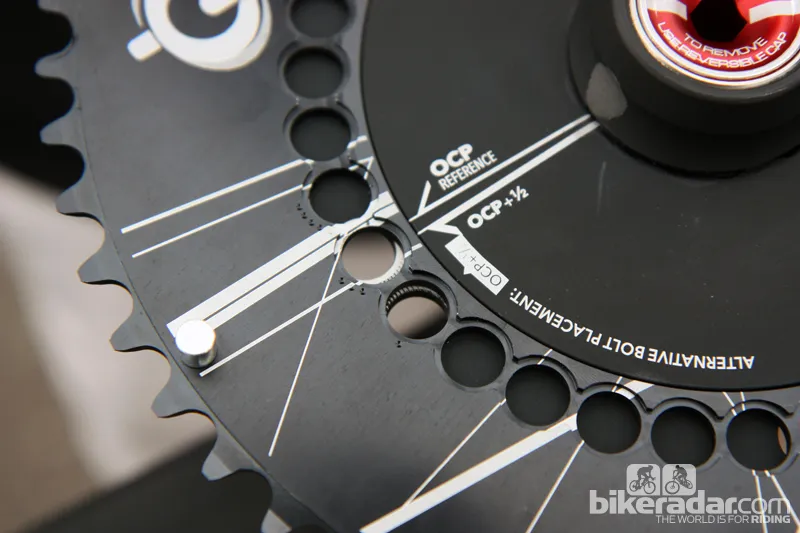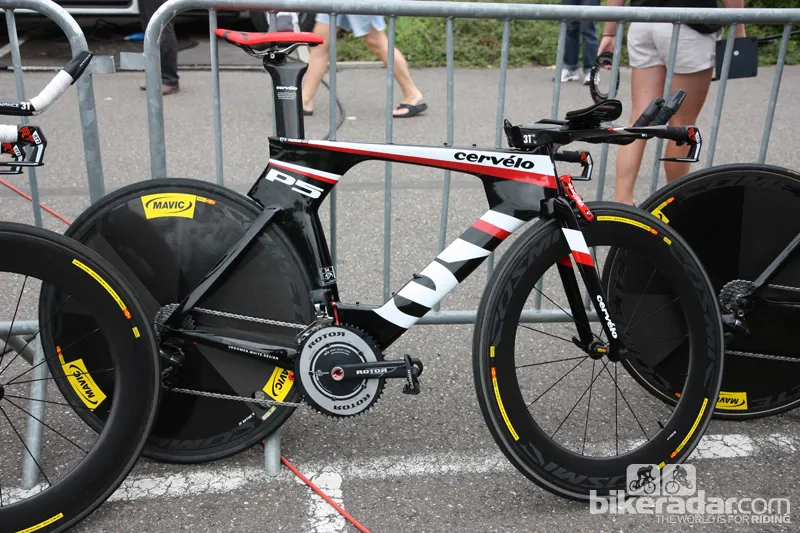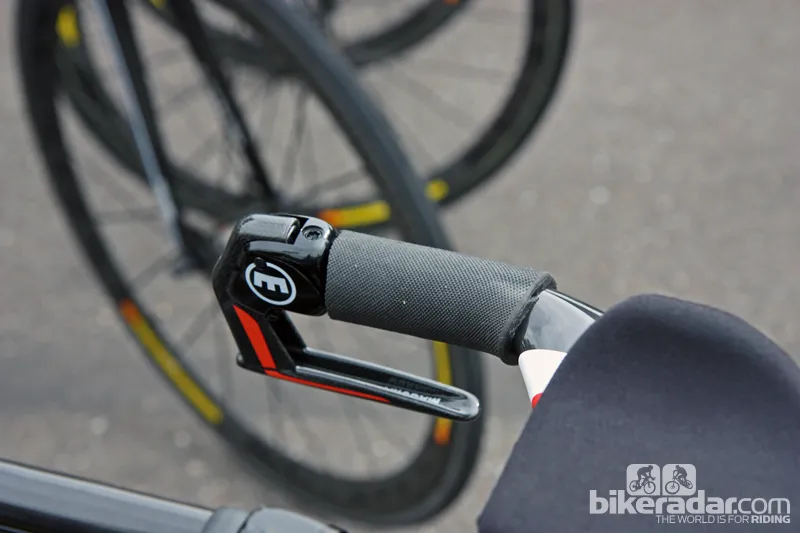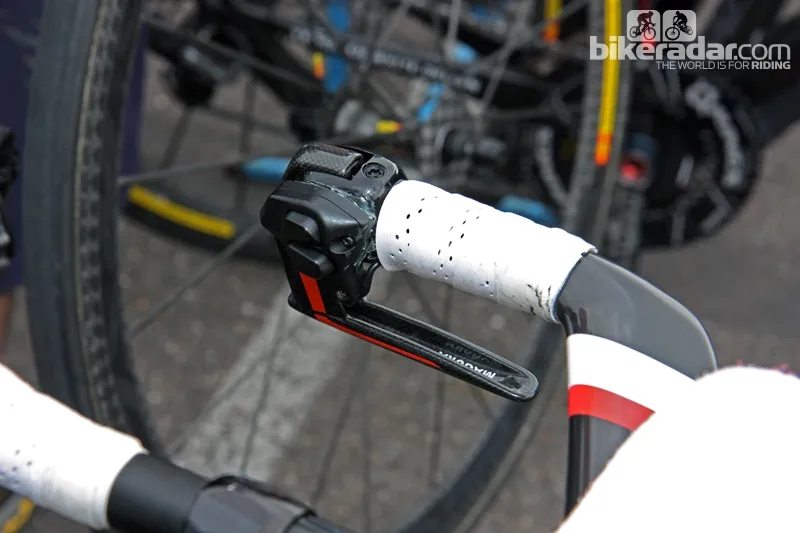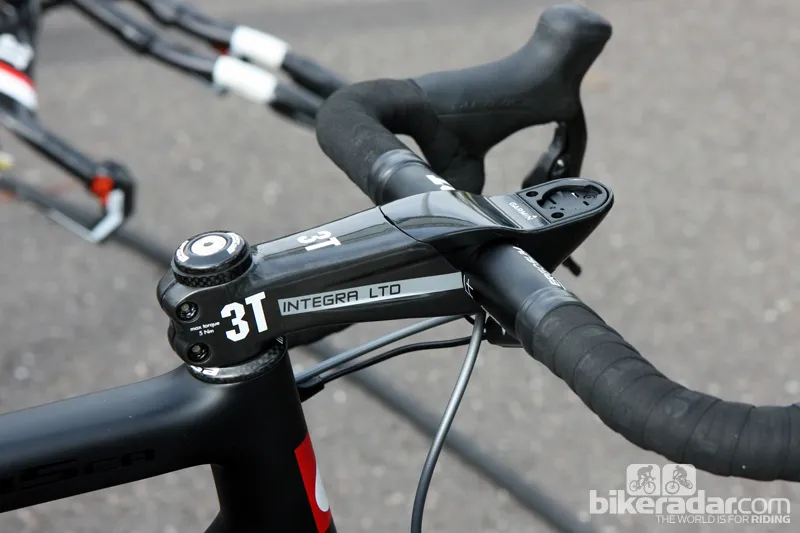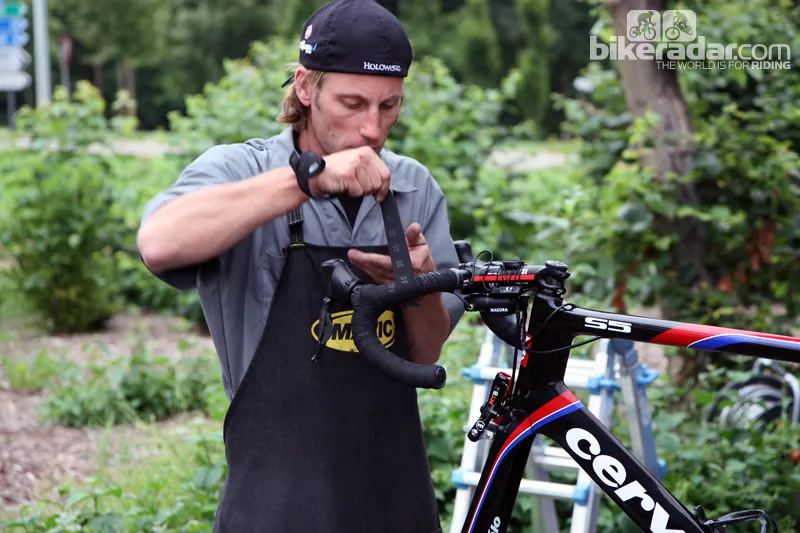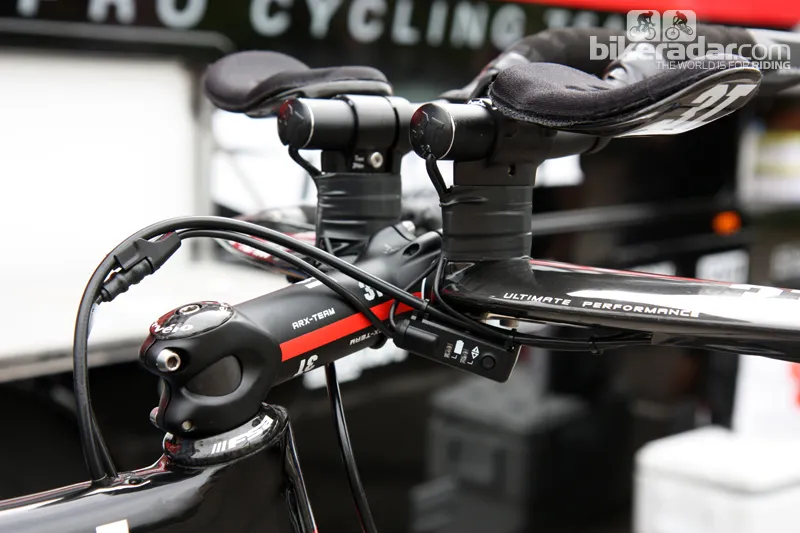Always at the cutting edge with gear, the Garmin-Sharp riders at this year’s Tour de France have their choice from a slew of bikes from team sponsor Cervélo, including the P5 and P4 time trial bikes, the S5 aero road bike, and the ultralight R5 and R5ca.
The team is also debuting several new products at the 2012 Tour: hydraulic rim brakes from Magura, Rotor's aero time trial cranks, Giro's intriguing Air Attack helmet and 3T's sleek Integra stem.
Garmin-Sharp has already been using Magura's new RT8TT hydraulic rim brakes on its Cervélo P5 time trial machines but David Zabriskie and David Millar also now have them mounted on their Cervélo S5 aero road bikes, too. The requisite mechanical-to-hydraulic converters add some weight, bulk and complexity, but Millar's bike is still just over 7kg, according to team mechanics (we weren't permitted to weigh bikes ourselves).
Unable to load media
More importantly, the hydraulic system lends a more positive – albeit substantially stiffer – feel at the lever and better responsiveness under really hard braking. From a mechanic's perspective, the fully sealed system should require less maintenance, too.
Showing up on the riders' time trial bikes are Rotor's new Flow cranks, designed with input from team sports scientist Robby Ketchell to decrease aerodynamic drag. Key features include more rounded edges on the crankarms, a solid and dished 'Aero MAS' chainring spider, and a matching solid outer chainring. The aerodynamic benefits are pretty nominal but Rotor still claims the Flow will save 22-26 seconds over a full Ironman leg (112 miles).
Unable to load media
Rotor also gave the Aero MAS dual chainring mounting holes that allow riders to more finely tune the position of their elliptical Q-Rings, effectively decreasing the minimum adjustment by half. Rotor admitted to BikeRadarthat most amateurs aren't likely to feel that small of a difference themselves, but it's likely the feature will find its way to production nevertheless.
Claimed weight is 562g without chainrings but with Rotor's 30mm-diameter 3D system that will work with BB30, PF30, BBright, BB386 and standard threaded bottom bracket shells.
We also spotted several of 3T's new Integra carbon stem on team bikes. This stem features a Garmin quarter-turn mount built into its forward shroud. This makes for a clean and neat appearance but puts the computer's display closer to the rider's natural line of sight, too.
Finally, it looks like Dave Zabriskie and David Millar will also ride at least some parts of this year's Tour de France on the new Giro Air Attack aero road helmet. It's a touch odd looking for sure (even Millar thinks so) but if Giro's aero claims are legitimate, the riders might just get over it.
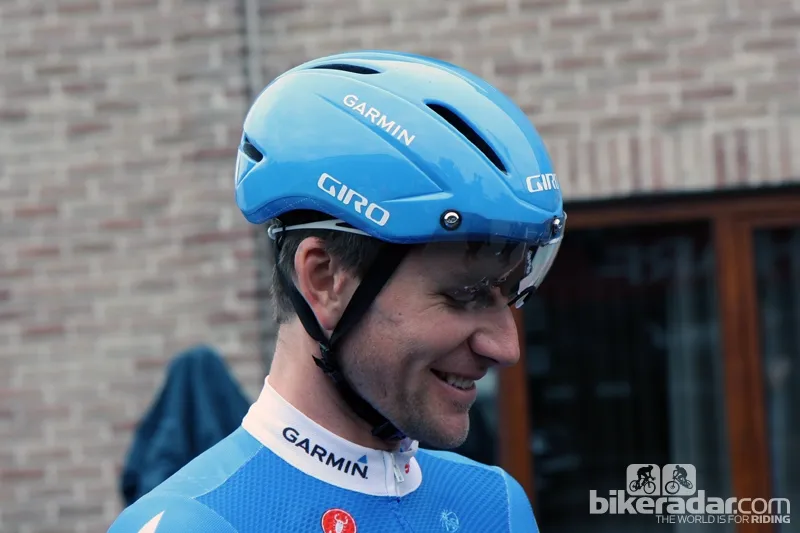
Garmin' new lid is, well, distinctive
